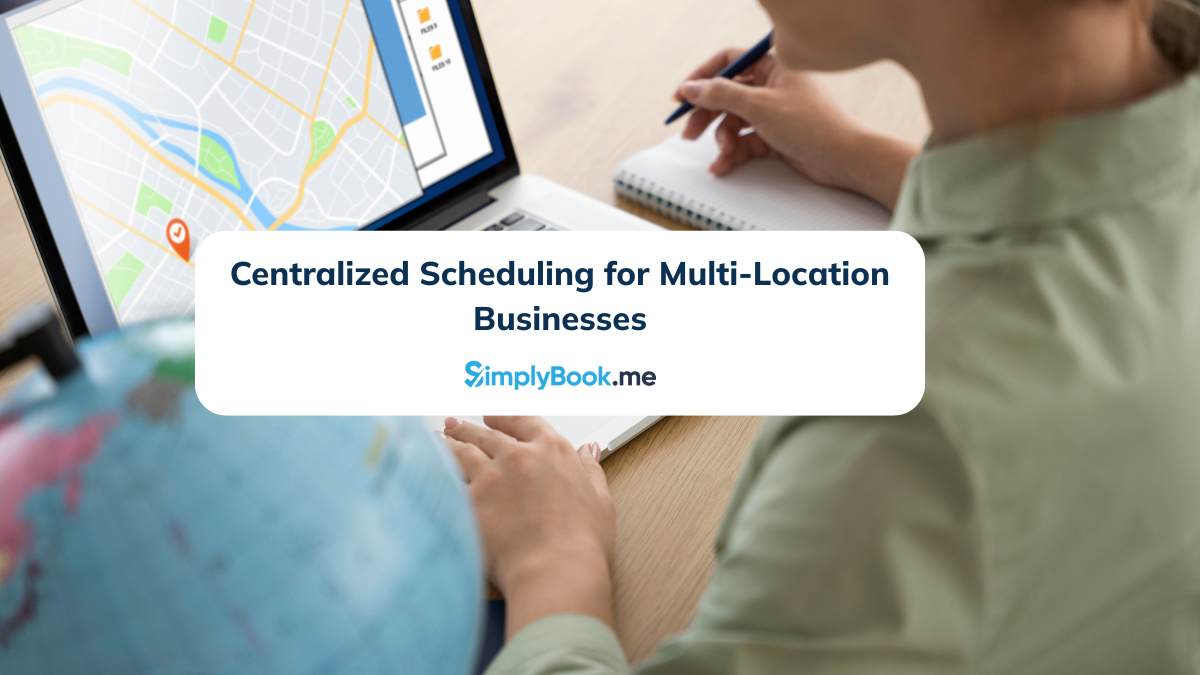Email Marketing Tips for Small Businesses

This post is also available in:
![]()
![]()
![]()
![]()
![]()
![]()
Introduction
Email marketing remains one of the most cost-effective and high-impact channels for small businesses looking to grow. Despite the rise of social media, influencer marketing, and newer digital tactics, email consistently delivers a high return on investment (ROI). In fact, a 2022 study by the Data & Marketing Association (DMA) found that email marketing generates an average ROI of $38 for every $1 spent, outpacing many other forms of online advertising.
So, why is email marketing such a powerhouse for small businesses? First, it offers direct access to your audience’s inbox—a space people check multiple times a day. Second, it can be personalized and automated, allowing you to nurture relationships with minimal ongoing effort. Finally, email helps you build trust over time, turning casual prospects into loyal customers. Below, we’ll explore practical tips and research-backed insights to help you supercharge your small business email campaigns.
1. Build a Quality Email List
A successful email marketing strategy begins with the right audience. Even the best-crafted messages will fall flat if they’re sent to the wrong people—or worse, to a list that was purchased or scraped online. According to HubSpot, email lists degrade by about 22.5% every year due to subscribers changing addresses or simply losing interest. This highlights the need for continuous list-building and maintenance.
To build a quality email list:
- Use Lead Magnets: Offer a free e-book, checklist, or discount in exchange for a visitor’s email address. According to a study by GetResponse, offering a lead magnet can increase opt-in rates by as much as 85% compared to generic “sign up for our newsletter” forms.
- Leverage Signup Forms: Place clear, accessible signup forms on key pages of your website, such as your homepage, blog, and checkout page. Make them visually appealing and easy to fill out.
- Offer Exclusive Promotions: Small businesses can provide special deals or early access to new products for email subscribers. This sense of exclusivity nudges people to opt in and remain on your list.
It’s equally important to clean your email list regularly. Remove inactive subscribers or invalid addresses to keep your engagement metrics healthy and avoid issues like high bounce rates, which can harm your sender reputation.
2. Craft Compelling Subject Lines
Once you have a growing list, your next challenge is getting subscribers to actually open your emails. Research from Invesp shows that 47% of email recipients open an email based solely on the subject line, and 69% report emails as spam after reading the subject line alone. This underscores just how critical the right phrasing, tone, and length can be.
When writing subject lines, focus on clarity and intrigue. Personalizing the subject line with the subscriber’s name can also boost open rates, as Campaign Monitor found that emails with personalized subject lines are 26% more likely to be opened. You can test different approaches—such as asking a question, teasing a benefit, or using emojis—to see what resonates with your audience. A/B testing your subject lines is a straightforward way to gather data on which style, length, or tone yields the best results. Over time, these insights will help you refine your approach so more of your subscribers take that first step of opening your message.
3. Personalize and Segment Your Emails
Today’s consumers expect tailored experiences, not one-size-fits-all blasts. Personalization goes beyond inserting someone’s name in the greeting; it’s about sending relevant content based on a subscriber’s preferences or past interactions with your brand. According to a report by Experian, personalized emails generate up to 6 times higher transaction rates than non-personalized ones.
Small businesses can benefit from segmentation by grouping subscribers based on demographics, purchase history, location, or even how they signed up. For example, you might send one set of emails to people who have purchased before (like a loyalty discount or VIP offer) and another set to new subscribers who haven’t yet made a purchase (with a special first-time buyer’s coupon). Mailchimp’s data shows that segmented email campaigns can drive 14.31% higher open rates and 100.95% higher click-through rates than non-segmented campaigns.
The principle is simple: when your readers perceive that your offers and content speak directly to their interests, they’re far more likely to engage and ultimately make a purchase.
4. Focus on Design and Content Quality
It’s not enough to get subscribers to open the email; you also need them to stay and take action. Engaging design and concise, compelling content keep readers from clicking away. A 2021 study by Litmus noted that 80% of people immediately delete an email if it doesn’t look good on their mobile device, which means your layout should be mobile-responsive and easy to read.
Use short paragraphs, subheadings, and a clear call-to-action (CTA) button that stands out. Aim for a balance between text and visuals: high-quality images can draw attention, but too many graphics can slow load times or trigger spam filters. It’s helpful to perform a mobile preview to confirm the design is seamless across different devices and email clients.
When it comes to written content, keep your language friendly and helpful. For small businesses, it’s often best to stick with a conversational tone that feels genuine rather than overly salesy. Highlight the value you’re offering—a discount, a new product that solves a common problem, or even a link to a helpful blog post. Also, consider including social proof like customer testimonials or a short case study. Nielsen data shows that 92% of consumers trust recommendations from people they know, and showcasing real client success stories can be a powerful motivator.
5. Time and Frequency Matter
The question of when and how often to send emails can significantly influence your success. Sending too many emails annoys subscribers and can lead to higher unsubscribe rates; sending too few can result in low engagement. A benchmark study by Sendinblue suggests that small businesses typically send between two to four campaigns per month to maintain consistent visibility without overwhelming their audience.
As for the best time of day, different studies present varying results, but many point to Tuesday or Thursday mornings as strong contenders for B2C campaigns. However, the “best time” can differ based on your audience’s routines. Early-stage entrepreneurs might send out content on weekends if their subscribers tend to engage more during leisure time. A good approach is to experiment: try sending on different days and analyze open rates, click-through rates, and conversions.
Pay attention to time zones, especially if you have an international audience. Tools in most email marketing services can help you schedule emails so they arrive at the optimal local time for each segment of subscribers.
6. Measure Your Success with the Right Metrics
One of the most significant advantages of email marketing is its measurability. You have a wealth of data at your fingertips to help you refine your campaigns. Some of the most crucial email marketing metrics include:
- Open Rate: The percentage of recipients who open your email. A healthy benchmark for small businesses often hovers around 20–25%, though this can vary by industry.
- Click-Through Rate (CTR): The proportion of subscribers who clicked on a link within your email. A CTR of 2–5% is considered strong for many industries.
- Conversion Rate: How many of those who clicked actually completed a desired action (e.g., making a purchase, signing up for a webinar). This is a direct indicator of your email campaign’s ROI.
- Unsubscribe Rate: A small uptick over time can be natural, but a sudden spike suggests you’re either sending content that’s off-target or mailing too frequently.
By reviewing your metrics, you can pinpoint what’s working. If your open rates are low, you might test different subject lines. If your CTR is lagging, try more engaging CTAs or bigger, bolder buttons. Each data point can guide incremental improvements, ultimately helping you craft emails that resonate more deeply with your audience.
7. Automate Your Workflows
For a small business owner wearing multiple hats, automation can be a lifesaver. Automated email workflows (sometimes referred to as drip campaigns) allow you to pre-schedule messages that send when a subscriber takes a specific action—like joining your list, making a purchase, or abandoning a shopping cart. According to Epsilon, automated emails have a 70.5% higher open rate and 152% higher click-through rate compared to general marketing messages.
Consider setting up the following workflows:
- Welcome Series: Send new subscribers a friendly intro, an overview of your brand, or a special first-time discount.
- Post-Purchase Follow-Up: Ask for feedback, suggest related products, or encourage them to share their experience on social media.
- Re-Engagement Series: Reach out to subscribers who haven’t opened an email in a while with a “We Miss You” campaign, including a tempting offer to bring them back.
With each workflow, your emails can maintain a personal touch while running in the background. This helps keep your brand top-of-mind without constant manual effort.
8. Stay Compliant with Data Protection Rules
As you collect and store subscriber data, it’s important to stay compliant with relevant regulations like the CAN-SPAM Act in the U.S. or the General Data Protection Regulation (GDPR) if you have European subscribers. Non-compliance can result in steep fines and reputational harm.
Key compliance tips include:
- Obtain Explicit Consent: Don’t add people to your list without their permission.
- Include an Easy Unsubscribe Option: Every marketing email must have a visible unsubscribe link.
- Keep Your Privacy Policy Updated: Let subscribers know what data you collect and how you use it.
While the specifics of these regulations can be complex, most email marketing platforms help you stay compliant by offering built-in tools for managing subscriber consent and unsubscribes.
9. Leverage Social Proof and Customer Engagement
Small businesses often thrive on word of mouth and local reputations. Including social proof in your emails—like brief testimonials, quick case studies, or user-generated content (UGC)—lends credibility and relatability to your brand. Bazaarvoice data indicates that 84% of millennials say user-generated content from strangers has at least some influence on what they buy.
You can take this a step further by asking loyal customers to forward the email to friends who might also benefit from your offer, or by encouraging subscribers to share a unique referral link. This kind of organic spread can help you reach new potential clients who are more likely to be interested in your offerings, given the recommendation from someone they trust.
10. Continuously Test and Improve
Email marketing isn’t a “set it and forget it” channel—especially for small businesses that need to maximize every ounce of ROI. Commit to ongoing experimentation with elements like subject lines, email layout, CTA wording, and sender name. Even something as small as a color change on your CTA button can influence click-through rates.
Split tests (A/B tests) enable you to compare two versions of an email by sending each version to a small segment of your list. Once you determine which version performs better, you can send the “winning” version to the remainder of your subscribers. Over time, these tests will give you a clearer picture of what resonates, allowing you to refine your approach and boost your overall performance.
Conclusion
Email marketing is a powerful, proven strategy for small businesses looking to connect with customers in a meaningful way. By focusing on list-building, personalization, thoughtful design, and consistent measurement, you can run campaigns that not only drive sales but also deepen the relationship with your audience. Whether you’re a brand-new startup or a family-owned establishment with decades of history, email marketing can help you grow by staying top-of-mind with the people who matter most—your customers.
The statistics speak for themselves: a well-planned email marketing campaign can outperform many other marketing channels, all while fitting comfortably into a limited budget. As you refine your strategy, remember to keep testing, keep optimizing, and most importantly, keep providing value to your subscribers. With each send, you’re not just delivering another promotional message—you’re building trust, loyalty, and long-term business success.


Comments
0 commentsNo comments yet